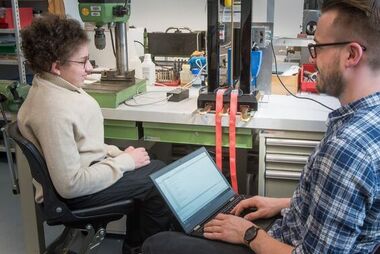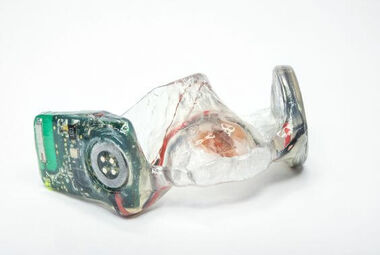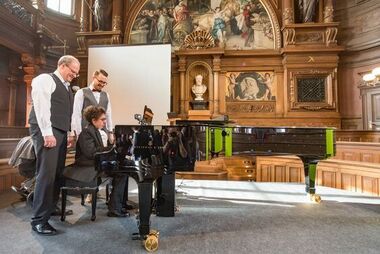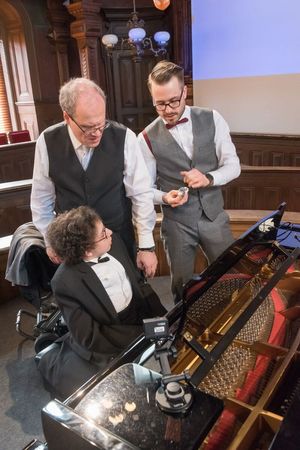Despite paraplegia, become a pianist

April 2017
Musical world premiere: A wireless oral device and pedal engine developed at Heidelberg Spinal Cord Injury Center supports 15 year-old Alberto on the grand piano.
For 15 year-old Alberto Mancarella from Los Angeles, a long-held wish was finally fulfilled on Friday March 31, 2017, at an official award ceremony of the German Foundation for Spinal Cord Injury (DSQ). For the first time in public, the young paraplegic pianist played excerpts from Bach's Italian Concerto on the grand piano in the Old Auditorium of Heidelberg University, using a special wireless mouth device that enables control of the piano's right foot pedal using his tongue. The device was developed by the team of Dr.-ing. Rüdiger Rupp, head of the Department for Experimental Neurorehabilitation at Heidelberg University Hospital, and Tobias Gallinat, a dental technician. They were recognized previously by the DSQ in 2008 with an award for innovation. Thanks to a generous private donation, Dr. Rupp and his team have now improved the technology so that control of the pedal engine is more precise and, most importantly, faster.

A tumor damaged his spinal cord - Alberto struggles to fulfill his dream to become a pianist
When she became aware of Dr. Rupp's award-winning development in 2011, Alberto's mother turned to the Heidelberg engineer for help. But the oral device was not yet fully developed, let alone available for purchase. "At that time, the work on the wireless device had been put 'on ice.' But Alberto's story, and his determination, intrigued and moved me so much that I absolutely wanted to help him," recalls Rupp. With the DSQ prize money from 2008, as well as a private donation of 10,000 Euro, he financed the position of Sebastian Kuppinger, who worked out the new version of the device, as well as the necessary materials.

A pressure-sensitive sensor is positioned behind the incisors, allowing force from the tongue to send control signals to the engine. Thus, Alberto can give graded amounts of pressure, and - in contrast to the first version that used biting - he can achieve more feeling for the force he produces. In addition, the small, approximately 15 kg and highly dynamic engine has much better performance than its predecessor, and the pedal can now be moved just as quickly as it would be by a non-disabled pianist. Other improvements have to do with the electronics. The entire system is now smaller, so that it also fits in the mouth of a teenager. The button battery cell provides power for eight hours and then can be recharged on a docking station.

Use of the tongue pressure sensor to control a computer or electric wheelchair conceivable
Rüdiger Rupp already has plans for further development of the oral device. Using the pressure-sensitive foil, the other pedals of the piano or also other functions on a keyboard can be controlled, depending on the position of the tongue pressure. "I've received corresponding requests for help from paralyzed musicians," said Rupp. Conceivably, the wireless oral device could also be used to operate a computer or an electric wheelchair - particularly interesting for people paralyzed from the neck down.
Further information:
Heidelberg University Hospital’s Spinal Cord Injury Center at the Department of Orthopedics

